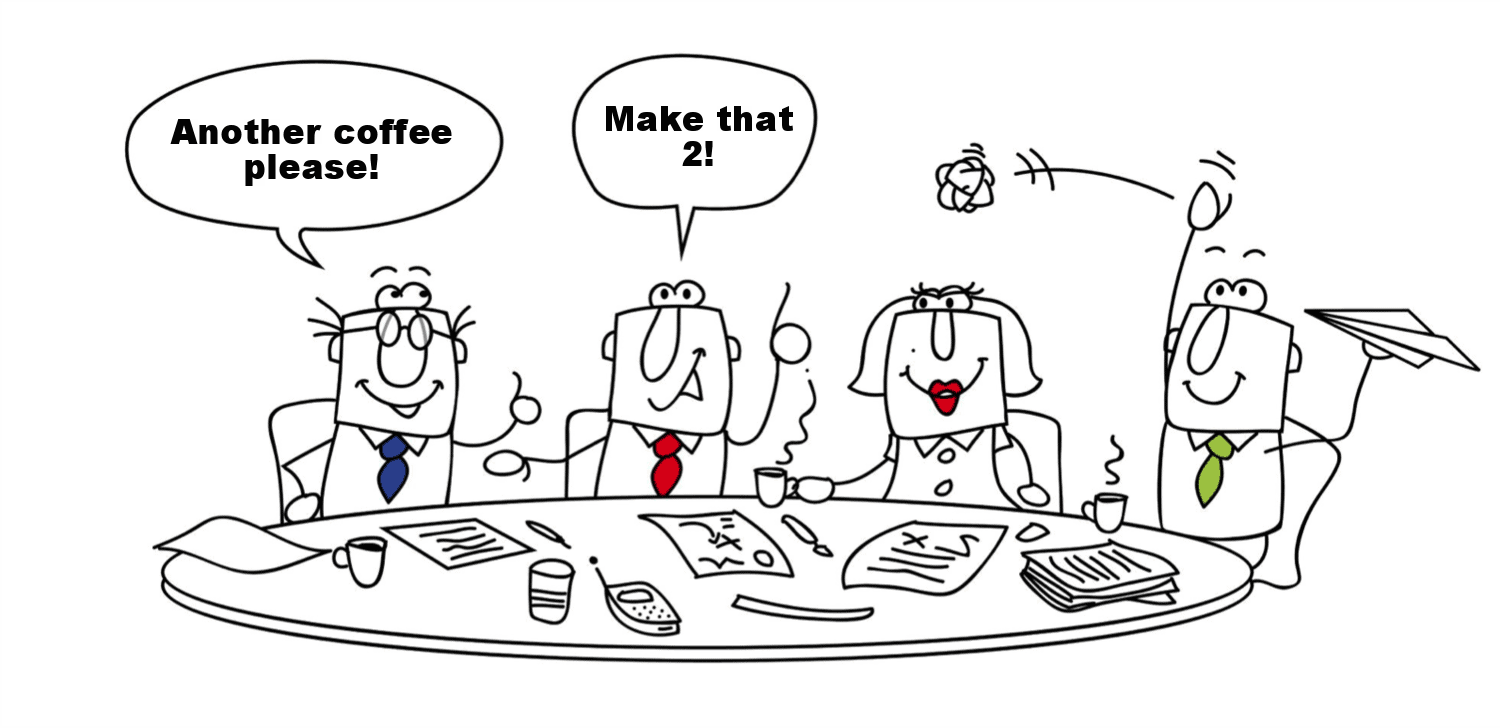4 Major Mistakes Women Make In Meetings

By now you will have seen that despite the present situation in the Australian business world, women in leadership is, not only great for business and shareholders, but also good for men, women and communities as well. If you have been living on a deserted island and perhaps missed some of the research then you can find recent reflections and hard data here, here, here and here.


However while this may be the case and many organizations have set gender diversity targets, both men and women are still struggling with this shift and also about what exactly is required. Despite laws about gender equality we’re still seeing evidence of significant pay gaps between men and women and unconscious biases (here and here) at play that keep women from even being considered for top roles.
Perhaps on a personal and more practical level we’re constantly reminded of the real gap with regular evidence of “mansplaining”, “bro-propriation” and “manterruptions”. Have you ever been out to a dinner party and you ask a woman what she does – only to have the man by her side answer for her and explain? Enough said.
However, let’s not forget that sometimes our own (women’s) brain biology and socialisation has us behave in ways that doesn’t always inspire confidence, and frequently we are so used to playing second fiddle that we even expect less for ourselves. As women in the workforce, we need to take responsibility for the part we play and meeting behaviours provide us with a perfect petri dish of workplace behavioural dynamics to examine. As someone who has participated in, convened and chaired more meetings than I can poke a proverbial stick at, here are four major mistakes to avoid that can keep us playing small.
1. Making coffee or note taking: As a woman with a formerly big job title I have always been careful to aim for equality and balance in the meeting makeup and division of roles and responsibilities. However my own mentor once pointed out to me that I frequently played the “hostess game” (a role I was extremely comfortable with) which in the eyes of some diminished my contribution before I’d even had the chance to contribute. Anecdotal evidence tells us that women frequently do this and Adam Grant and Sheryl Sandberg, in their article Madam CEO, Get Me a Coffee published in the New York Times, talk about how these behaviours (and expectations) keep women playing small – by diminishing our contribution and our own gravitas. The sad part (for women) is that if a man does these house office duties he is showered with praise and positive acknowledgement!
The fix? If you must play hostess, find a gracious way to involve both men and women in the housekeeping tasks (i.e. rotating responsibilities). Alternatively, allocate staff not involved in the content of the meeting to take on those responsibilities. If someone asks you to get them a coffee and you don’t believe that is your role at the time, politely decline and suggest that you too would like someone to bring a coffee.
2. Apologizing before saying something contradictory: We’ve all seen it, and most of us do it – apologize, I mean. Sorry! Yes, women do this way more than men (37% more in fact) and it’s a cultural/socialization thing as we’re brought up to take up less space, not rock the boat and be more compliant. In meetings women frequently apologize when delivering controversial or contradictory opinion as though we are softening the blow somehow. Once again, this behaviour diminishes our input, makes us appear less certain, less knowledgeable, less powerful and less capable of leading. If you want to know more there was a great campaign about how women say sorry for things they shouldn’t, by Pantene. Watch and learn and you might just see that you do it way more than you imagine – and that the men in your life don’t.
The fix? This behaviour may take a while to change so ask a trusted colleague or mentor to privately observe you in meetings. Alternatively record a meeting (with permission) and then count the number of apologies that were said and those that were actually necessary. Be prepared to be amazed – then do something about it.
3. Not getting to the point: As women we are generally known to be great communicators. The part of our brain that is in charge of communication develops well in advance of the male of the species and we take advantage of that. From an evolutionary perspective good communication and using language to make meaning is the glue that holds communities together. But in our time-poor meeting environment, over explaining can sometimes get in the way of efficiency, productivity and can hamper clear and effective communications with those of the opposite sex. In short, women frequently use a lot of words, making references to people and situations not in the meeting, when fewer words might make a bigger difference.
The fix? Learn to get to the point quickly, succinctly and clearly. Say it once, clearly and articulately. Let it land. That’s it. No need to repeat it. Practice and rehearse with a trusted colleague or mentor outside of the meetings structure.
4. Being too abrupt or strident – in our efforts to beat the biology and biases, and not succumb to our socialization. This behaviour backfires by potentially alienating both men and women. My own personal version included a stance of suffering no fools and taking no prisoners when presenting arguments with my very direct get with the program presentation style. As a result great projects and plans were put on a go slow. Counterproductive to say the least! Yes, there is unconscious bias at play, where-by men and women will judge women negatively and bossy (even if she’s not) when she is being strong and direct. And until the bias in these situations is eliminated, we need to find a way to work around it.
The fix? Find the mid-ground, the balance between waffling on too long or being too abrupt and short. Once again, practice out loud with a trusted colleague or mentor – focus on memorable sound bytes (gleaned from media or comms training), story telling techniques that have been proven to work and also varying both tone and pitch.
So what next?
How can you get around these behaviours and ensure you are positioning yourself as leadership material? What tactics might you adopt to keep you feeling as though you are thriving and flourishing, rather than worn out and worn down? Preparation is the key. Try asking yourself before each meeting (yes, even the ones you’ve been invited to but aren’t chairing!):
-
What do I we need/want to achieve in this particular meeting?
-
How will I most effectively do that?
-
How does this fit into my career strategy and longer plans?
-
What preparation do I need to do in advance of the meeting to help me achieve my longer term goals?
-
What rehearsal, preparation do I need to do in advance to keep those “playing small” behaviours in check?
Then go out and have some great meetings – and keep motivated and on track for stepping up into your next big role.
Vive la révolution!
#ambitionrevolution











Fortune favours the well prepared particularly on LinkedIn
View Post